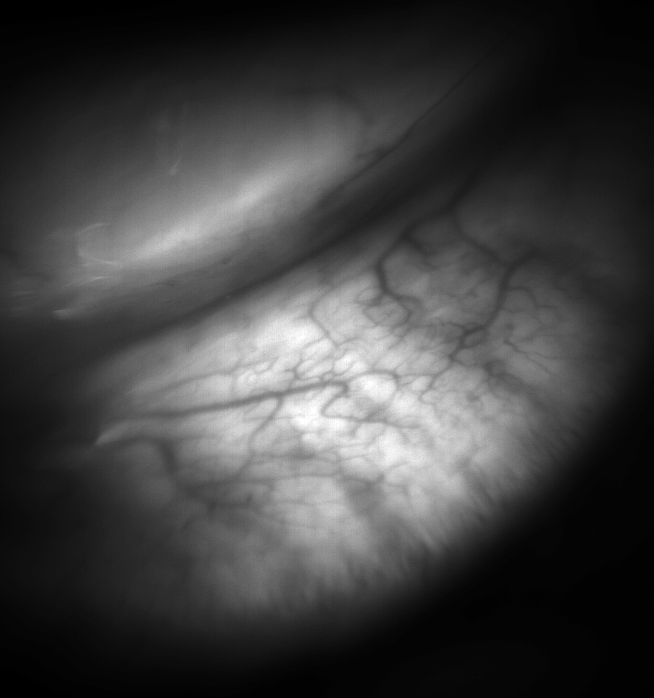Meibomian gland loss is correlated with tear film and ocular surface parameters. But so is age.

Meibomian glands in the lower eyelid, under amber light. Note the blood vessels. (Source via CC 4.0)
Meibomian gland dysfunction (MGD) is the most common type of evaporative dry eye disease (EDE). Problems in MG secretion can result in an unstable tear film. To non-invasively assess MGD, non-contact infrared meibography (NIM) is frequently used, with several scoring systems available.
Previous studies have shown the correlation between meibomian gland loss (MGL) and tear film parameters (e.g. tear break-up time, Schirmer test, corneal staining) and subjective symptomatology (Ocular surface disease index, OSDI). There remains, however, a question of whether MGL is of sufficient diagnostic value, especially given that the number of meibomian glands decrease with age.
The aim of this prospective study, enrolling 161 participants, was to evaluate the relationship between MGL and ocular surface parameters. The following observations were recorded for the study patients: tear film osmolarity (TFO), Keratograph 5M automated measurements, and slit-lamp examination, Keratograph infrared meibography, and tear film volume. Participants were divided into five groups according to their meiboscore; the clinical characteristics of each group were then analyzed.
Results showed that the MGL from the upper and lower eyelids were comparable. There was no significant difference in the reported symptomatology among the five groups. However, statistically significant differences were found in tar osmolarity, bulbar redness, and corneal and conjunctival staining. Nevertheless, when adjusted for age as covariant, only corneal staining was significantly correlated with MGL.
This study therefore recommended that age-matched groups be established in future studies that aim to establish diagnostic limits of parameters evaluated for dry eye disease.
Rico-del-Viejo, L., Benítez-del-Castillo, J., Gómez-Sanz, F., García-Montero, M., Llorens-Quintana, C. and Madrid-Costa, D. (2019). The influence of meibomian gland loss on ocular surface clinical parameters. Contact Lens and Anterior Eye, 42(5), pp.562-568.